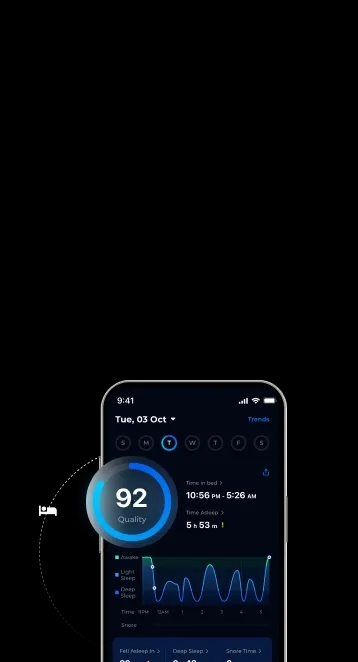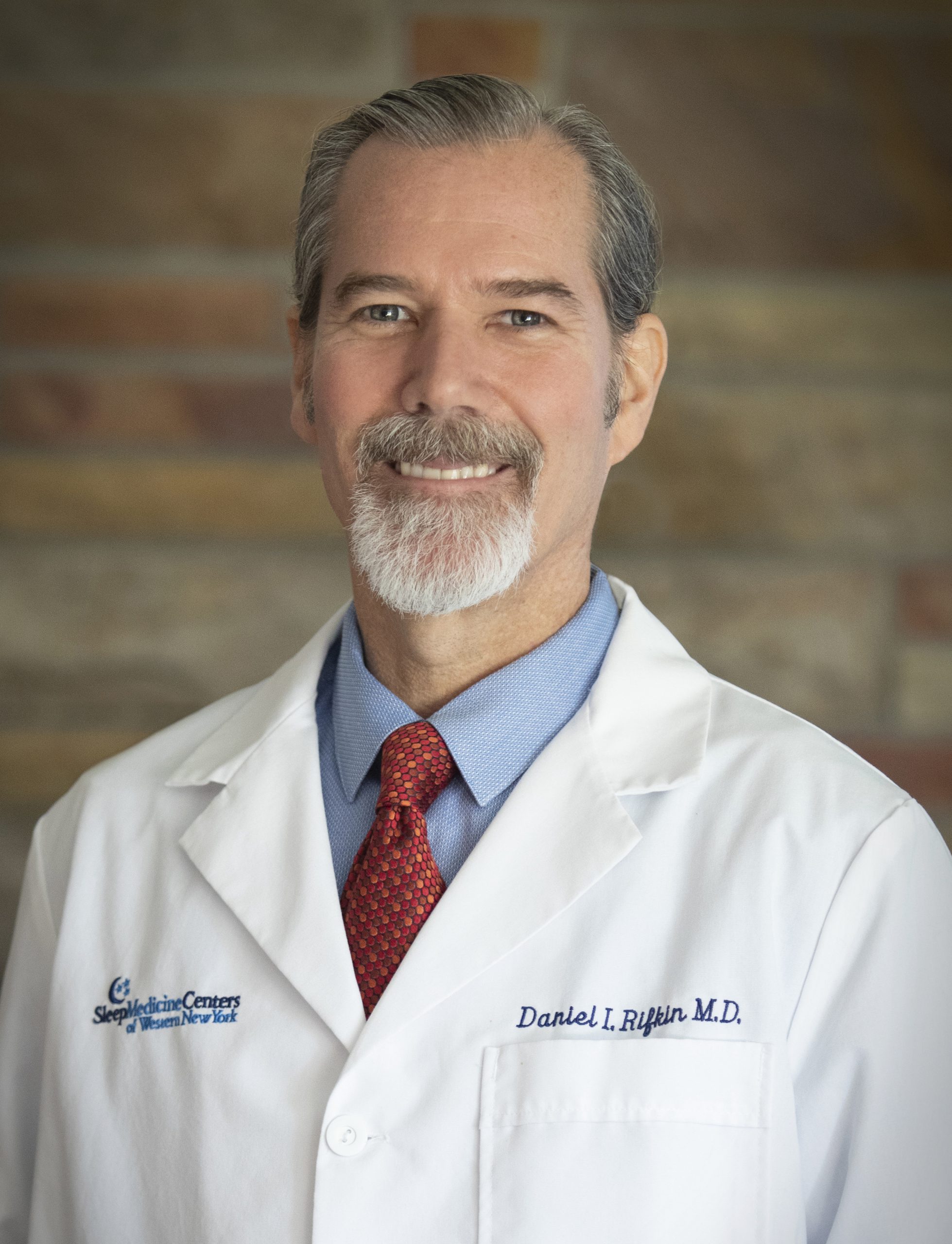


Sleep apnea is a sleep disorder where individuals experience obstruction in breathing (apnea) during sleep. The most common type of apnea is obstructive sleep apnea (OSA). It is characterized by snoring, obstruction in breathing daytime drowsiness, and recurrent collapse. 936 million people worldwide are estimated to suffer from obstructive sleep apnea.
Sleep apnea is a common disorder causing the breathing to pause or become very shallow. These breathing pauses can last from a few seconds to minutes and might occur over 30 times an hour. People with sleep apnea may experience interruptions in sleep with frequent awakenings and loud snoring. Interrupted and poor-quality sleep can lead to daytime drowsiness and fatigue. Individuals with sleep apnea often snore loudly. There are two types of sleep apnea, obstructive sleep apnea and central sleep apnea.
Obstructive sleep apnea is the most common type of apnea. It is a condition in which individuals experience obstruction in breathing (apnea) during sleep. Obstructive sleep apnea occurs due to partial or complete throat closure (per airway). Complete closure can lead to apnea, while partial closure allows breathing but reduces the oxygen intake (hypopnea).
Central sleep apnea (CSA) is another type of sleep apnea characterized by pauses in breathing during sleep. It occurs because the brain fails to send the appropriate signals to the muscles that control breathing. Unlike obstructive sleep apnea, where the airway is physically blocked, in central sleep apnea, the issue originates in the central nervous system. This can happen due to conditions such as heart failure, stroke, or because of certain medications.
Common symptoms for both types of sleep apnea include loud snoring, frequent awakenings during sleep, gasping or choking sounds, and excessive daytime sleepiness. However, each type of sleep apnea also presents specific symptoms, which we recommend you verify below. If you experience any of these symptoms, it’s important to find a sleep clinic for evaluation and diagnosis.
Related content:
Understanding Sleep Apnea: Symptoms and Treatment
Recognizing the common causes of sleep apnea is crucial for initiating effective treatment. As there are two different types of sleep apnea, both have distinct underlying causes.
The causes of obstructive sleep apnea are often complicated. Moreover, the apnea and hypopnea symptoms can worsen after the apnea person falls asleep.
The causes of central sleep apnea (CSA) are diverse, mainly involving issues with the brain’s control of breathing.
Physicians specialized in sleep medicine diagnose apnea by investigating the following factors:
Overnight monitoring by various studies demonstrates five or more obstructed breathing events per hour during sleep.
During a physical exam for sleep apnea, doctors may assess different factors related to the sleep apnea. This can include examining the upper airway for signs of obstruction or abnormalities, such as enlarged tonsils or nasal congestion. Physicians may also evaluate factors like neck circumference, as increased neck size can be associated with a higher risk of sleep apnea.
These physical assessments, along with a thorough medical history, help clinicians in diagnosing and managing sleep apnea effectively.
An ShutEye® app allow users to monitor their sleep patterns and detect signs of sleep apnea. Users can track factors such as snoring, sleep duration, and nighttime awakenings, providing valuable data for initial assessment. Subsequently, this data can be shared with a sleep specialist for further analysis and interpretation.
While at-home tools can offer insights, a clinical evaluation by a sleep doctor is essential for an accurate diagnosis of sleep apnea.
A clinical sleep study, in a sleep clinic or laboratory, provides the most accurate diagnosis of sleep apnea. Polysomnography, the primary tool used in these studies, involves monitoring various physiological parameters during sleep. This evaluation includes measurements such as airflow, breathing effort, oxygen levels, heart rate, and brain activity. By analyzing these data, sleep doctors can identify and quantify episodes of apnea and hypopnea and assess the overall sleep quality.
Treatment helps keep snoring individual’s airway open during sleep so their breathing does not stop.
Related content:
The Best CPAP Masks for Sleep Apnea Relief

There is no direct method for preventing apnea. However, daily life management methods like weight control and active treatment of inflammatory diseases of the upper airway can help prevent its severity.
The apnea individuals can intervene by taking the following precautionary measures:

Sleep apnea individuals treated with ventilators can use the ventilator parameter records to monitor their OSA disease.
In most cases, the treatment completely relieves symptoms and complications from sleep apnea. In most cases, the treatment completely relieves symptoms and any complications from sleep apnea. However, untreated obstructive sleep apnea can lead to or worsen heart diseases.
Untreated obstructive sleep apnea (OSA) poses significant risks to health, particularly impacting cardiovascular and metabolic systems. This condition, characterized by repetitive breathing pauses during sleep, can lead to various complications if left unaddressed.
Central sleep apnea (CSA) can also have significant complications, particularly in regard to cardiovascular health. People with CSA may experience:
Related content:
Restless Legs Syndrome and Sleep Apnea
Ling, Vanessa (ND, CNS), Wu, Chester (MD), Stiles, Susan (PhD). "Sleep Apnea Statistics and Facts You Should Know." National Council on Aging, Oct 04, 2023. Retrieved from https://www.ncoa.org/adviser/sleep/sleep-apnea-statistics/
Paul E. Peppard, Terry Young, Jodi H. Barnet, Mari Palta, Erika W. Hagen, Khin Mae Hla, Increased Prevalence of Sleep-Disordered Breathing in Adults, American Journal of Epidemiology, Volume 177, Issue 9, 1 May 2013, Pages 1006–1014, https://doi.org/10.1093/aje/kws342
Romero-Corral A, Caples SM, Lopez-Jimenez F, Somers VK. Interactions between obesity and obstructive sleep apnea: implications for treatment. Chest. 2010 Mar;137(3):711-9. doi: 10.1378/chest.09-0360. PMID: 20202954; PMCID: PMC3021364.
Rudrappa M, Modi P, Bollu PC. Cheyne Stokes Respirations. [Updated 2023 Jul 31]. In: StatPearls [Internet]. Treasure Island (FL): StatPearls Publishing; 2024 Jan-. Available from: https://www.ncbi.nlm.nih.gov/books/NBK448165/
Strohl, K. P. (2020, September). Sleep apnea. Merck Manual Consumer Version., Retrieved May 31, 2022, from https://www.merckmanuals.com/home/lung-and-airway-disorders/sleep-apnea/sleep-apnea
A.D.A.M. Medical Encyclopedia. (2020, January 29). Obstructive sleep apnea – adults. MedlinePlus., Retrieved May 31, 2022, from https://medlineplus.gov/ency/article/000811.htm
Strohl, K. P. (2020, September). Central sleep apnea. Merck Manual Professional Version., Retrieved May 31, 2022, from https://www.merckmanuals.com/professional/pulmonary-disorders/sleep-apnea/central-sleep-apnea
Kryger, M. H., & Malhotra, A. (2022, May 23). Management of obstructive sleep apnea in adults. In N. Collop (Ed.). UpToDate., Retrieved May 31, 2022, from https://www.uptodate.com/contents/management-of-obstructive-sleep-apnea-in-adults
Mehra, R. (2021, August 25). Obstructive sleep apnea and cardiovascular disease in adults. In N. Collop (Ed.). UpToDate., Retrieved May 31, 2022, from https://www.uptodate.com/contents/obstructive-sleep-apnea-and-cardiovascular-disease-in-adults